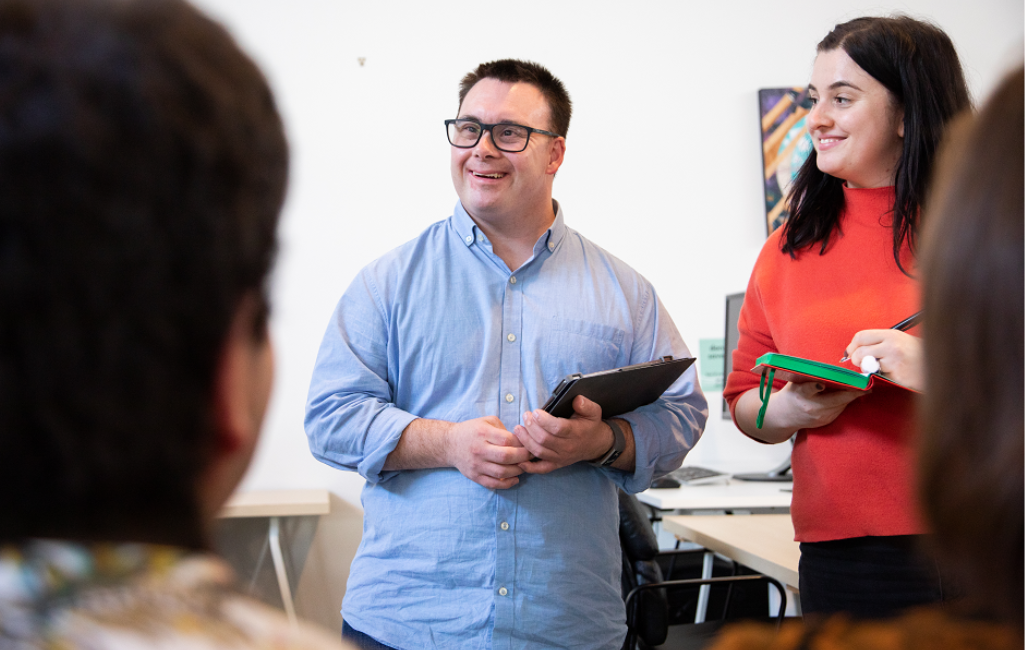By Fawzia Reza
Although there has been greater awareness of inclusive practices within many organizations, a significant employment gap persists between individuals with a disability and their non-disabled colleagues. However, during the COVID-19 pandemic, the situation has improved, and the hiring of employees with a disability increased because social distancing and telework options allowed more flexibility and remote work entailed fewer transportation challenges. It is encouraging that the upward trend in this area has continued.
According to the U.S. Bureau of Labor Statistics, the number of people with a disability who are employed has reached the highest level since tracking began in 2008. For example, in 2023, employment rates for disabled females and males reached an unprecedented high. This was especially notable for women with a disability, which has significantly narrowed the gender gap in employment between disabled men and women. As a corollary, the overall unemployment rates for disabled workers also fell to a record low. However, it is not known whether this effect has occurred because more people with some type of disability are entering the workforce, a higher number of candidates are identifying their disability or if more have recently become disabled.
While some leaders are skeptical regarding hiring people with disabilities, overall, there has been a positive shift in the mindset of many executives who are now much more receptive toward hiring and accommodating employees with disabilities. For example, the Kessler Foundation, in partnership with the University of New Hampshire Institute on Disability, surveyed the effects of the COVID-19 pandemic on supervisor perspectives in 2022 and compared the results to results from a similar survey in 2017. There were consistent gains in metrics related to disability-related employment practices.
Notwithstanding, research demonstrates that disabled candidates still experience significant challenges in being accepted for a position compared to those without a disability. In some cases, the unemployment rate of disabled candidates is twice as high as comparably qualified candidates who do not have a disability, which leads to economic instability and financial crisis for this demographic. Some reasons for the lack of employment opportunities include discrimination, stereotypes and prejudice.
Discrimination against people with disabilities often creates roadblocks for them and further exacerbates the employment gap. These practices are more prevalent when the individual is from a diverse ethnic background. Discriminatory practices can carry a significant financial penalty for the organization. For example, in February 2024, McLane Northeast, a distribution company, refused to interview someone after they learned they were deaf, denying the candidate a fair chance to get the job. The jury awarded the victim $1.675 million.
While some disabilities are visible and cannot be hidden, employees with invisible disabilities such as depression or anxiety prefer not to share their disabilities with their employees due to fear of retaliation or being stereotyped. Some employees share their conditions with their supervisors, hoping to be understood and respected, but are often disappointed with the outcome. For example, in 2019, a general manager who worked at Holiday Inn Express & Suites told his supervisor that he needed time off to take care of his depression. After being discharged from the hospital, he was told that he had been fired because “the company was afraid he might hurt other people.” As a settlement in the ensuing disability discrimination lawsuit, the hotel chain paid $100,000 to resolve the charges.
Even when employers hire people with visible disabilities, they are rarely hired or promoted for white-collar jobs such as consultants, managers or programmers. An article in the Rutgers School of Management and Labor Relations states that blue-collar employment is more common among people with disabilities (43%) than people without disabilities (37%). Denying opportunities to an entire segment of the population robs organizations of developing and promoting innovative concepts driven by the perspective of someone differently abled. The Harvard Business Review recently featured Chieko Asakawa, a blind computer scientist, who created a smartphone app that sends vibrations or whispers on how to reach a destination. If organizations are not willing to take active steps to address their biases, they will do a disservice to individuals with disabilities and, at the same time, negatively affect their own reputation and innovation.
There are some steps that organizations might take to ensure fair hiring and retention practices, including regular training for all employees. Implementing inclusive practices should not be a one-time initiative, but an evolving process and regular workshops can create more opportunities to self-correct. Leaders must check their biases and encourage all stakeholders to follow their lead. The Implicit Association Test from Harvard University, commonly known as IAT, allows us to understand how our perceptions originate and how they may affect those around us. In particular, organizations must encourage (and even require) all employees to take the Disability IAT test and then take concrete steps to address identified biases.
Explore more articles for the Disability Community here.
[ad_2]










